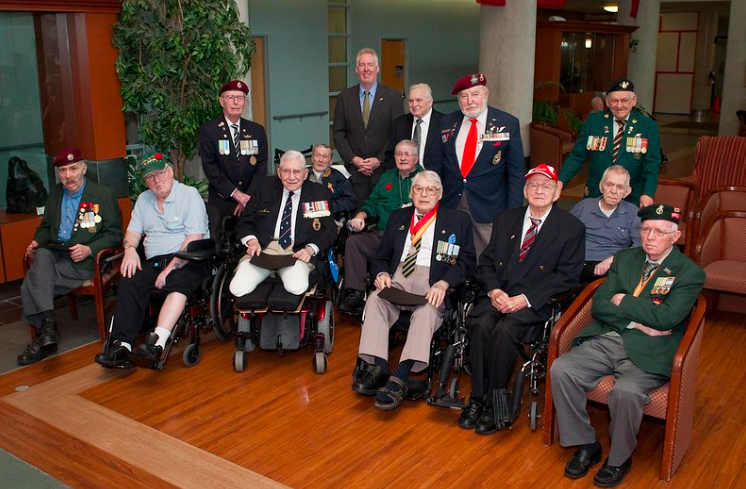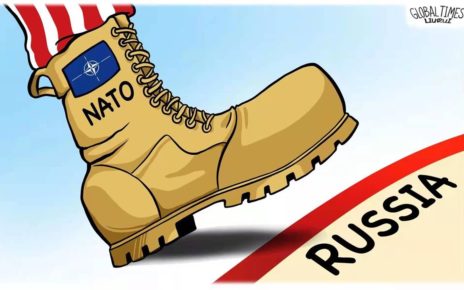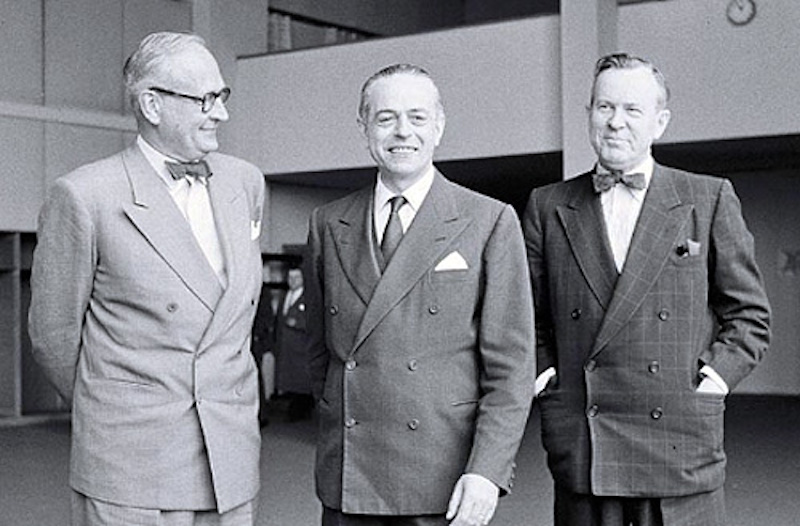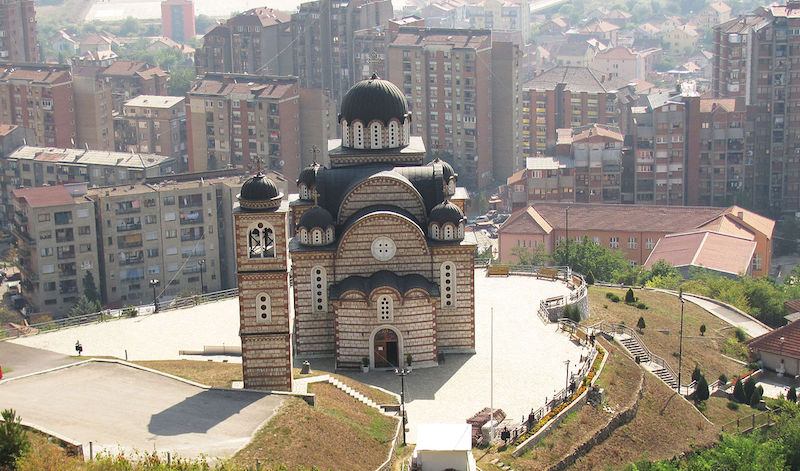The first proxy war of the Cold War broke out roughly 69 years ago today, on June 25th, 1950, with the invasion of North Korea onto South Korea across the 38th parallel. It was not until the election of Prime Minister Louis St. Laurent in 1948 that Canada changed its character towards Korea and the Korean War. Previously, Prime Minister William Lyon Mackenzie King approached the tensions in Korea with hesitation, despite the fact that Canada was a member of the United Nations (UN) and the North Atlantic Treaty Organization (NATO). This shift in leadership is extremely important as it dictated the manner in which Canada contributed to Korea by dispatching its navy, military, airforce, and through its role as a peacekeeper during and after the war.
The shift in how Canada approached international politics is exceptionally significant, which occurred with a change in leadership, as it directly corresponds to how Canada contributed to the Korean War. Although there was a lack of preparation by the Canadian military, they managed to contribute a significant amount of effort to the Korean War through the deployment of the Canadian navy, ground troops, and the airforce. Moreover, Canada was a key player in negotiating the Korean War Armistice, making the Korean War the first successful example of a UN intervention.
The Canadian navy had various roles in the Korean War, despite the absence of military investments, which first revealed the strong Canadian commitments to the Korean War. Initially, Canada sent three destroyers to the Korean waters. These were the Cayuga, Athabaskan, and the Sioux. Canadian naval contributions revolved around being able to undertake numerous tasks. For instance, the Royal Canadian Navy (RCN) first took on the role of mundane patrols and escorts. They created blockades between enemy ships, aided the crossing of officials, dispatched reinforcements, and so on. However, this is not to undermine the military capabilities of the Canadian navy. The Cayuga, and Athabaskan both demonstrated their strengths in battles. The first Canadian naval operation was at Inchon, where the Cayuga took part in bombardments. This was highly successful in holding off communist troops inland, clearing the way for UN ground forces. Commando operations as such occurred continuously throughout the war. The RCN also aided other Commonwealth naval forces in surveillance operations. All in all, the resourcefulness of the RCN was witnessed by the international community throughout its time in Korea. It should be noted that in total, eight of Canada’s eleven destroyers served in Korean waters. The achievements of the RCN showed that Canada had a duty in the post-war order. As this ultimately showed strong commitments to the UN, the RCN obtained praise from the UN for its performance.
Another area of the military in which Canada lacked preparations, yet displayed great efforts to demonstrate their international responsibility to Korea was through the deployment of Canadian ground troops. The first armed forces that left for Korea was called the 2nd Princess Patricia’s Canadian Light Infantry (PPCLI). This was an elite unit of troops, as the ‘light’ implies that they were fast on their feet. Becoming one of the most celebrated infantry units, the PPCLI joined England, Australia, and New Zealand to create the Commonwealth Brigade. Apart from the highly praised 2nd PPCLI, many more Canadian units served in Korea. Services that ensured the health and quality of the military such as the Royal Canadian Medical Corps, Dental Corps, Electrical and Mechanical Engineers also took part in the war.
The Battle of Kapyong in 1951, which was crucial in opening the path to the victory of the allies, showed the will power of Canadians to overcome unfamiliar situations in an effort to come out as an honorable nation from the war. This was the first predominantly Canadian battle, using 700 men from the 2nd PPCLI. The tactic was to take advantage of the steep Korean hills, which the brilliant Lieutenant Colonel Stone had figured out. Canadian troops camped out on these hills, forcing enemies to dreadfully climb up with heavy artillery if they wished to attack. Ironically, the Chinese and North Koreans had the same strategy in mind; however, the Canadians reached the hills first, allowing them to win one of the most prominent battles in Canadian history. Other successful contributions by Canadian troops include the landing in the Pusan perimeter and Inchon. The 2nd PPCLI’s heroic services awarded them with the US President Unit Citation. Today, the fact that the 2nd PPCLI is still the only Canadian unit to have won this award shows to what extent Canada was truly committed to Korea over other international issues at the time.
The contributions of the Royal Canadian Air Force (RCAF) in Korea further depicts great efforts, despite the fact that Canadian plans did not participate in warfare, demonstrating the Canadian will to offer as much as they could. Due to the decrease in military expenditure, the only airforce squadron that was sent to Korea was the No. 426 Squadron. Although the Canadian airforce did not engage in direct warfare due to their capabilities, they had mundane duties such as the transport of supplies and equipment. Through participating in the Korean Airlift in 1950, Canada made early contributions to war as there was an instantaneous need for supplies. In terms of military contributions, although no Canadian aircraft took part in warfare, it was decided that Canadian pilots would serve with the United States Fifth Air Force. Even though Canadian planes were ill-equipped to engage in warfare, Canadian pilots were more than capable of collaborating with their American counterparts to serve collectively under the UN. The fact that Canada wanted to contribute however modestly at the least shows the eagerness in Canada’s approach to the Korean War as an internationalist towards communism, despite the insufficiency of the airforce.
Perhaps the most prominent aspect of the war where Canada exhibited its sufficiency is through its role as a prime negotiator of the Korean War Armistice. Throughout the war, Canada’s role in negotiating the Korean Armistice earned Pearson a chief role within the UN, something Canadian politicians were not able to undertake during the Mackenzie King era. Canada chose to station troops in Korea after the war to oversee the maintenance of peace, showing their passionate internationalist take on international politics and collective security. Armistice negotiations began in 1951, with Canada as a part of the UN Cease-Fire Group. Lester B. Pearson a Canadian politician, who was the President of the United Nations General Assembly in 1952, was the middle man that attempted to reverse the vigorous American approach towards negotiations. Not only did Pearson potentially derail a general Asian war, the Canadian cabinet decided to keep approximately 7000 troops in Korea after the signing of the 1953 armistice, who would supervise the withdrawal of troops, return of prisoners, and the general restoration of Korea. This truly depicts the essence of the Canadian foreign policy established by St. Laurent as one that centered around maintaining a collective Western front, rejecting the somewhat isolationist sentiments Mackenzie King present towards the responsibility of challenging communism in the international community.

Featured Picture: Consul General Kevin Johnson is surrounded by Korean War veterans at Toronto’s Sunnybrook Veterans Centre (March 8 2012), by US Embassy Canada via Flickr. Licensed under Public Domain.
Disclaimer: Any views or opinions expressed in articles are solely those of the authors and do not necessarily represent the views of the NATO Association of Canada.




